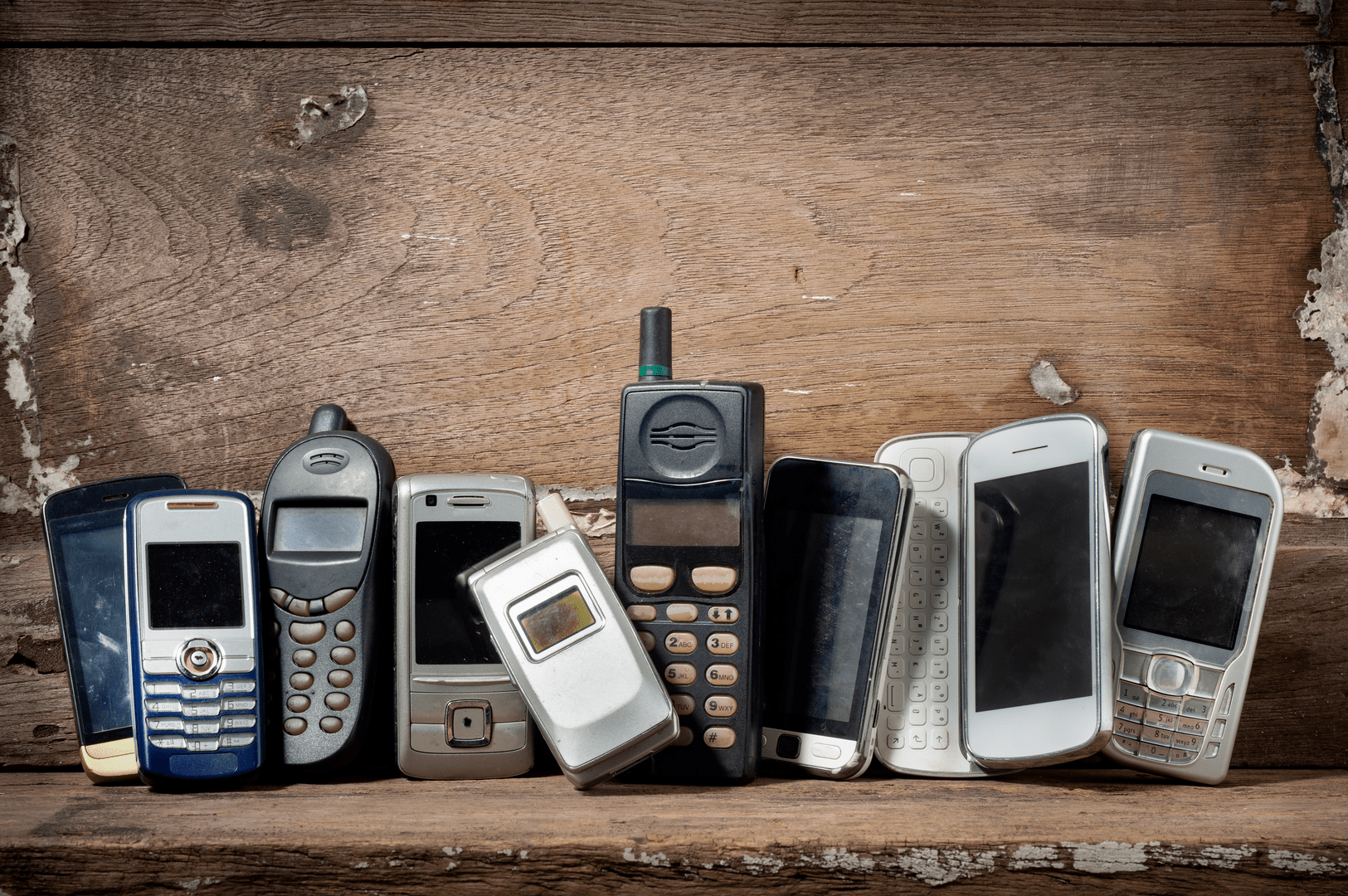
The Mobile Phone Evolution
It’s hard to imagine life without a mobile phone. We’ve all been there when we’ve either left the phone at home or even worse, lost it, and the blind panic that follows. Mobile phones have become as much a part of our lives as, well, eating and drinking!
Here’s a short look at how the mobile phone has evolved over the years, from basic 1:1 platforms to the information and communication hubs that we, frankly, now couldn’t live without.
The Early Years
The 1940’s saw the first mobile phone invented by engineers at AT&T. However, they were perhaps better described as two-way radios that were used by taxi drivers and the emergency services, to communicate.
It wasn’t until 1973 when the first mass market handheld mobile phone was launched by Motorola, a device that weighed a whopping 1.1kg!
In the early 80’s, the European conference of Postal and Telecommunications Administrations [CEPT] set up a committee to develop a European standard for digital telecommunications. CEPT decided on several criteria that the new system must meet; international roaming support, high speech quality, support for hand-held devices, low service cost and support for new tech, such as ISDN.
And in 1987, the representatives of 13 European countries signed a contract to deploy that telecommunications standard – known as GSM [Global System for Mobile Communications]. This standard was subsequently written into European law.
Meanwhile, in the mid 80’s, 1985 to be precise, Ernie Wise made the first ‘public’ mobile phone call in the UK from a pub in St Catherine’s dock to Vodafone’s HQ.
The 90’s Commercialisation.
In 1992, Neil Papworth sent the very first SMS message. Neil worked as a developer, contracted by Vodafone, to develop a messaging service. His message was sent to a Vodafone director wishing him a ‘Merry Christmas’ at an office Christmas party.
By the end of 1996, the mobile phone boom had well and truly begun with phone ownership at 16% of households, partly due to the launch of the first pay as you go, non-contract phone service from Vodafone, Vodafone Prepaid.
1998 saw the first downloadable content available in the form of ringtones. This was quickly followed by emoji’s, invented by Shigetaka Kurita in Japan, and were picture based Vs their all-text predecessor emoticons.
This was also the year that the big supermarket brands got in on the act, selling Pay and Go Phones at discounted prices, just under £40, busting the market wide open.
The end of the decade saw the arrival of the Blackberry. Seen as the ultimate business tool, the device allowed users to read and respond to emails from anywhere. And we mean anywhere ... 83% of users said they responded to work emails on holiday and over half admitted to sending emails whilst on the toilet, earning the device it’s now famous nickname, the Crackberry.
The Noughties Boom And Into Today ...
With adoption rates on the up, mobile phones were firmly cementing their place in society. In 2000, we saw the Nokia 3310 hit the shelves and it flew, selling 126 million units. Meanwhile, over in Japan the first camera phone had been launched with the technology reaching our shores in 2002, via the Nokia 6750.
In 2003, the 3G standard started to be adopted worldwide, paving the way for mobile internet and the rise of the smartphone. And by 2006, phone ownership stood at around 80% - a huge jump from the 16% seen only a decade ago.
2007 and the launch of the iPhone, only available on O2 and priced at a then eye-watering £600. Android soon followed in 2008 with a smartphone that looked very similar to the Blackberry with a keypad and trackball. 2008 was also the year we saw the launch of both the App Store and what’s now known as the Google Play Store – the app market was about to explode.
2009 saw two significant developments; O2 announced a successful 4G connection using 6 LTE masts in Slough, UK and WhatsApp was launched, the now hugely popular messaging app with 1.2 billion users sending 10 billion messages a day.
Samsung launched it’s first Galaxy S smartphone, which to this day is still the most popular Android brand. And moving a few years ahead into 2011, Samsung cemented their place as the biggest global smart phone provider as a result of the success of the Galaxy S II.
2012 and Apple launched the iPhone 5, followed in 2013 by the iPhone 5S that used fingerprint scanning via the touch button.
Mid-decade and Huawei and Xiaomi attempt to crack the Western Markets but Samsung and Apple held firm with the launch of their Galaxy S5 and iPhone 6S models, cementing their global dominance with 38% global market share between them. 4G, whilst only represented 14% of mobile connections, already accounted for 47% of mobile data traffic.
As we move into 2016, AI had made its market entrance via the global phenomenon, Pokemon Go app. In 2017, Apple marked its 10 year anniversary with the iPhone X and Samsung released the Galaxy S8, both having +80% screen-to-body ratio’s. And in 2019, 5G has begun to be deployed in the UK and US, boasting data transfer speeds 5-6x faster than 4G.
Which brings us to today, 2022. With technology evolving at lightening pace in the quest for a competitive edge in one of the biggest markets in the world, the future seems hard to predict. Expect clean displays with front facing camera’s being completely hidden, wireless charging and zero ports, foldables, an eco-friendly focus and of course, 5G. But the future is probably a whole new blog in itself!

